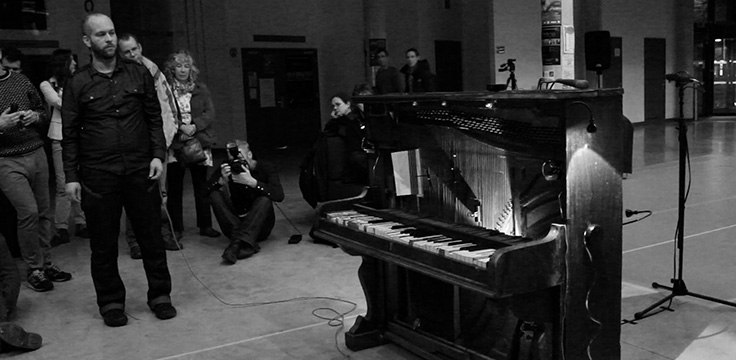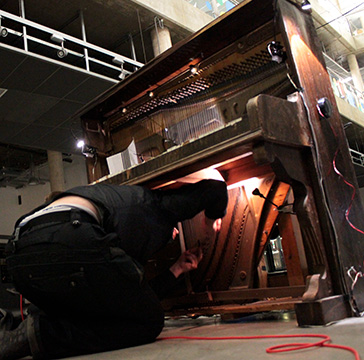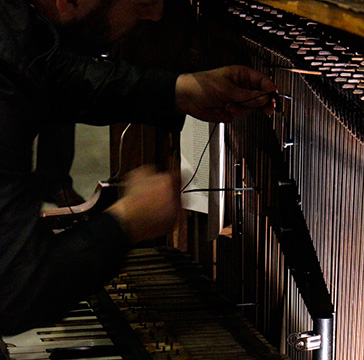Inter-Play / Re-Sound (2011)
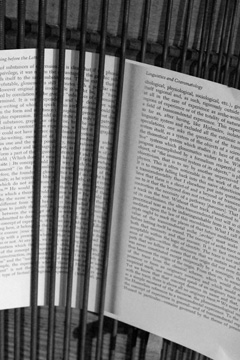
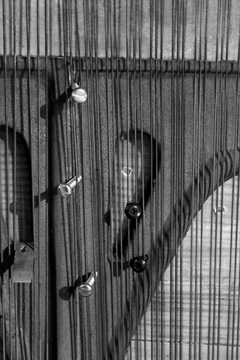
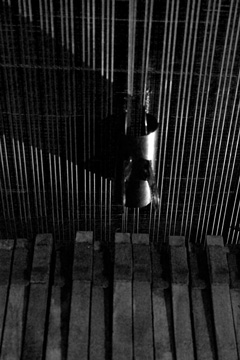
Commissioned by and premiered at the Peninsula Arts Contemporary Music Festival, Plymouth 2011.
A live electronic piece for amplified derelict piano, human performer, and algorithmic computer performer. A variable number of transducers is attached to different spatial positions on the piano body. The performer carries a minature microphone and is free to improvise with the piano in the first part of the piece, while the computer is registering these actions through machine listening and then joins in with its own conclusions. The piano mechanics should be removed so as to produce “empty keys” and to allow direct access to the strings. The performer is encouraged to prepare the strings of the piano in different ways and to bring objects with which to play on the piano. A random interval regarding minimum and maximum duration of the piece is adjusted in the software. The audience should be located as close as possible to the piano and ideally can move around the piano during the performance.
Programme note
While the notion of an ‘instrument’ is one of abstraction—after all a piece for piano is usually written for any piano—in my sound art work I am more interested in unique situations. Such provides the abandoned, partly broken and detuned piano found in the University’s theatre repository. Not only is it a beautiful piece of furniture with each of its 84 keys being different, it also turned out to be a marvellous reverberation machine when used as electroacoustic amplifier.
In «Inter-Play / Re-Sound» I tried to create a continuum between a live electronic music piece—one which uses an acoustic ‘instrument’ as sound source which is fed into computer transformations—and sound installation, a situation in which time unfolds more in an environmental than a musical-dramatic way. The piece thus starts with the performer producing all kinds of sounds on piano and ends with the piano left as an installed, re-sounding artefact.
The performer is equipped with a miniature microphone and highlights more the physical structure of the piano and not so much aims at piano music sounds. The sounds get amplified and are projected back onto the corpus of the piano, making it a spatially extended and reverberating loud-speaker. At the same time, a computer starts listening to the performer’s live actions, building up a memory of sounds and gestures. An algorithmic realtime composition joins the human performer in an inter-play, sooner or later being fully in charge of the situation and dismissing the performer who becomes another listener. The algorithms of observation now turn onto themselves, leaving the system spin in an autopoetic way for a decided amount of time.
The analysing part of the computer is deliberately constructed in a manner that avoids the typical stimulus-response pattern of live electronic pieces, instead focusing on the idea of a inexhaustible pool of material left behind in the first part. It highlights a new function of the contemporary computer music composer—that of composing composition and interaction processes, what could be called meta-composition. It is this design of second order structures that bring together electroacoustic music and sound installation.
The spatial character and individuality of the piano is best perceived when the audience surrounds it. You are therefore invited to carefully walk around the scene during the performance which lasts between seven and ten minutes.
Binaural mix (please use headphones)
